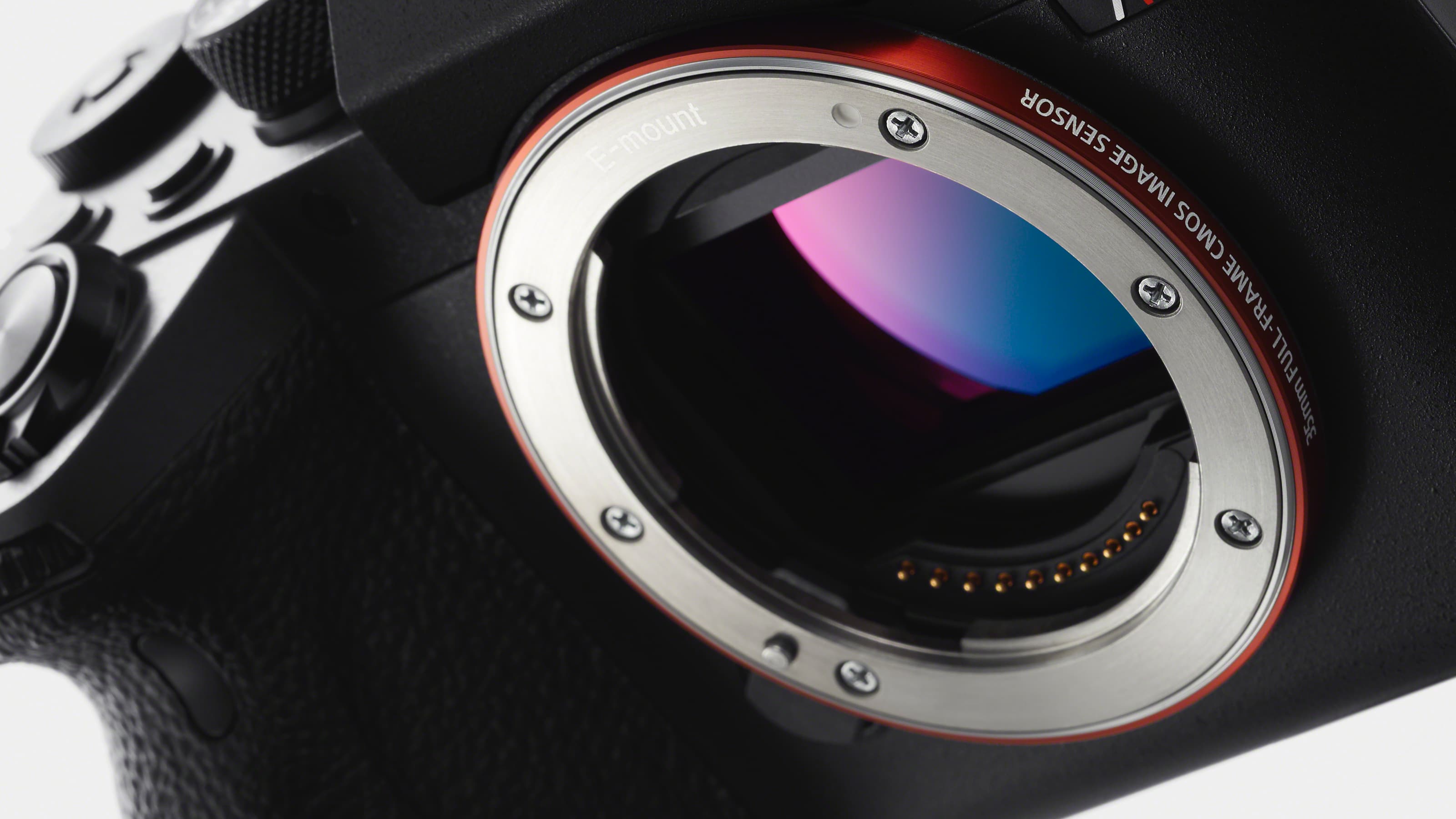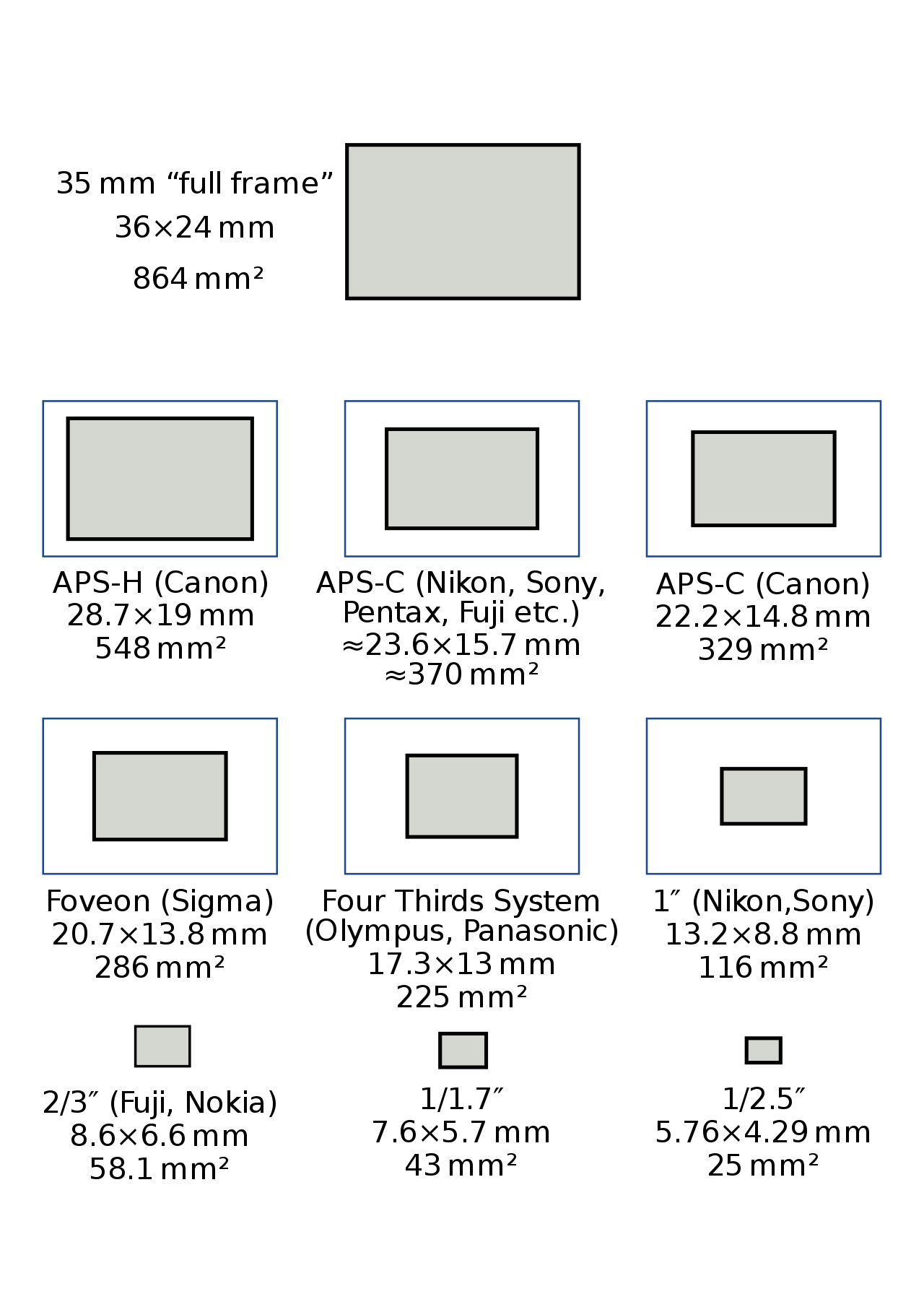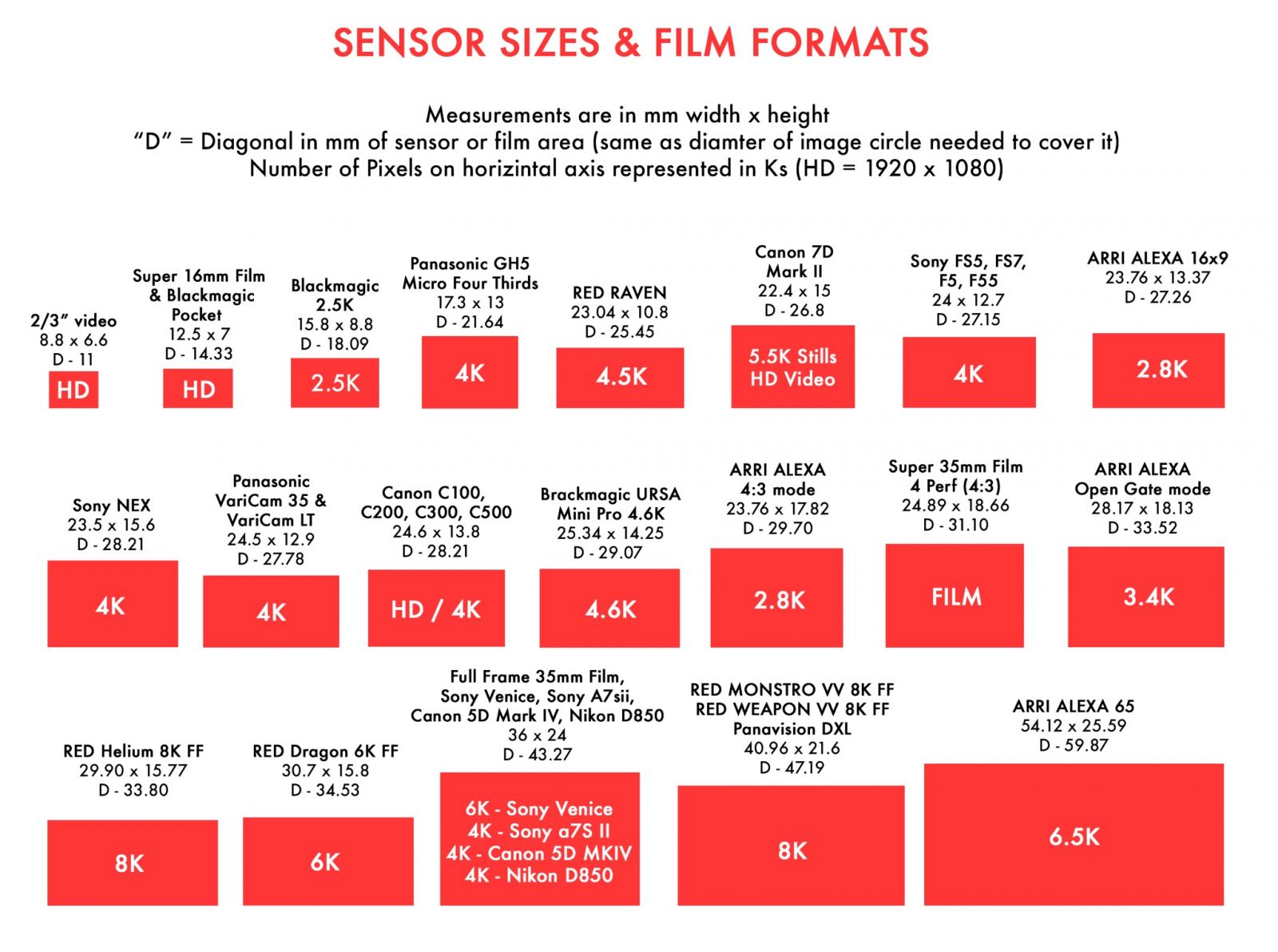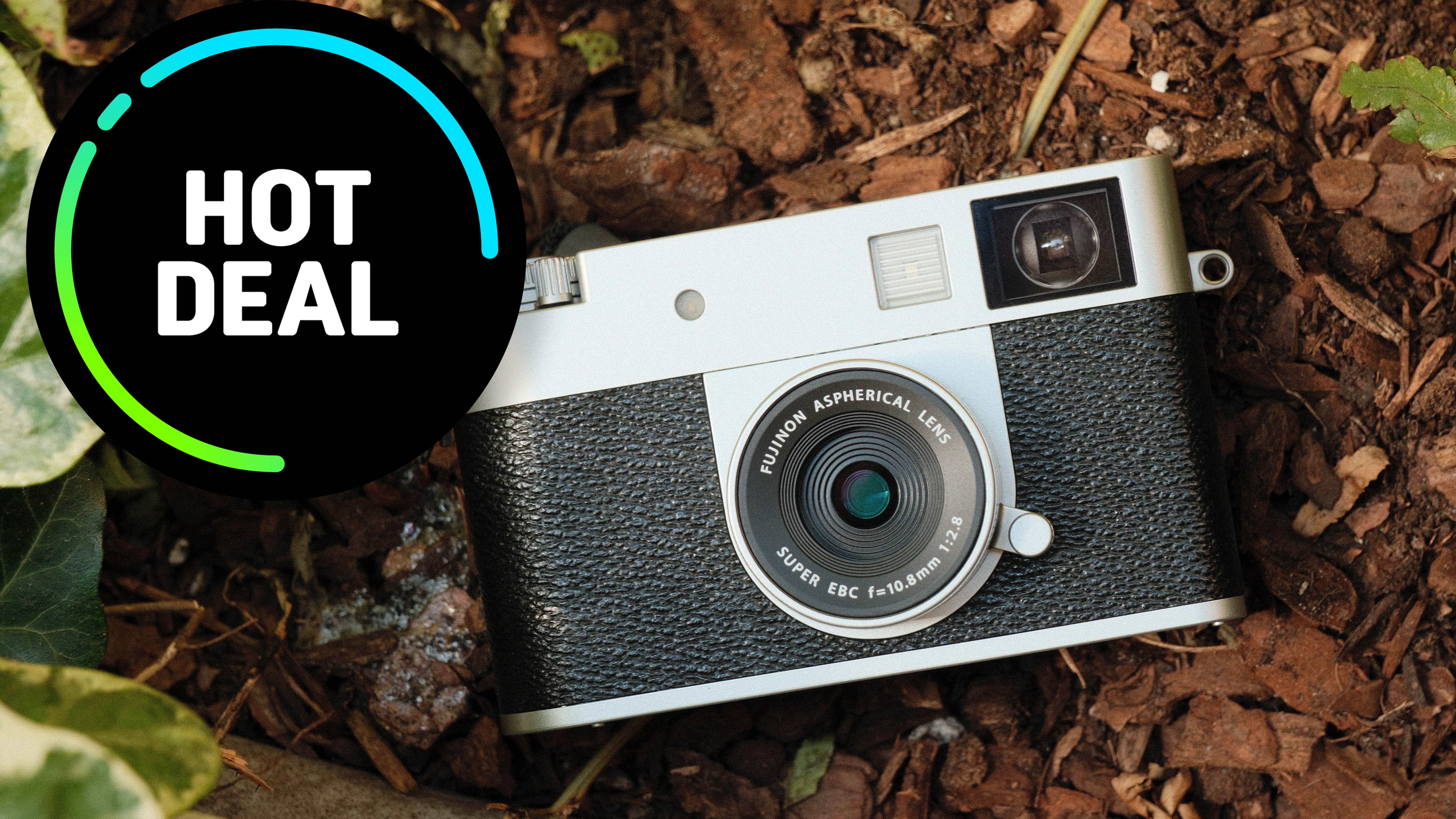Camera sensor sizes are stupid
Is anyone else baffled by camera sensor sizes or is it just me?

I was happy until I started really thinking about digital camera sensors. From full-frame mirrorless cameras to APS-C compact cameras, I opened pandora's box, and what was inside... I did not like it. I write about cameras all day, and many reading this will be able to just switch off and think, 'hey, this doesn’t actually matter' – and I envy you.
Camera sensor sizes are a chaotic mess of names and numbers based on minor precedents set by film types and formats from decades ago. With digital cameras, you would think this was a chance to have a rebirth, reset the system and create a universal sensor-size utopia. No, instead camera makers doubled down on the naming pandemonium, leaving us with our current disarray.
Full Frame
Full frame cameras are the standard sensor for modern professionals. Full frame is obviously the full amount of a frame, a frame of course being an arbitrary concept measuring any size, and naturally, all other digital sensors will also cover the full amount of their differing sizes of 'frames'. But let's put the historical naming anomaly aside.
Most people know 'full-frame' as 35mm, down to it being 35mm on the long edge. This matches the popular 135 film type developed by Kodak that dominated photography for the best part of a century.
It makes sense. An image is 35mm on the long edge. It is easy to understand how large it is, well for most of the metric world, (America and Liberia, you might have to consult a ruler) but 35mm just makes sense!
Oh, wait, what, full-frame is actually 36mm? Oh no, here we go…
Medium Format
We all know that a medium format camera has a larger sensor than a full frame, because obviously, a medium is bigger than a full. And it's quite clear how big medium format is, it's erm, medium-sized.
The best camera deals, reviews, product advice, and unmissable photography news, direct to your inbox!
Turns out medium format digital sensors cover a range of sizes, basically anything bigger than full-frame, and why not, standardization is for the weak. Well that is typical for anyone who knows the varying sizes of medium format film, right? Well not really. To add confusion, no medium format digital sensors are currently the actual historical size of medium format 120 films, which had a fixed edge of 6cm.
Phase One currently makes the largest medium format sensor at 53.7 × 40.4mm, which they very much call a medium format sensor, whilst Fujifilm makes a smaller medium format sensor at 43.8 × 32.9mm, which they refer to in marketing as large format, because of course they do. Large format is in fact from 102mmx127mm, so not quite Fujifilm, but nice try.
APS-C
Oh APS-C, doesn’t that catchy name tell you everything you need to know about its size? Oh what, it doesn’t? Well, it stands for Advanced Photo System – Classic, glad that is all cleared up. Fine. APS-C is based on a new film type developed in 1996 just as digital cameras became universally popular, so was pretty much never used by anyone.
• Upgrade your kit! Switching up from APS-C to a full frame camera...
But it lives on as a digital sensor size, kind of, I mean it varies between 20.7×13.8 mm to 28.7×19.1 mm, so that's quite a large margin of 8×5.3mm. So if this is actually one sensor size is up for debate right away. That margin is actually bigger than the entire sensor in an iPhone.
Most manufacturers have agreed on 23.5×15.6mm as the size for APS-C, however, Canon decided to make their APS-C sensors around 1mm smaller than everyone else. I give up.
What we do know is that APS-C is bigger than Micro four thirds and smaller than full frame. Okay, got that? Let's move on.
Micro Four Thirds
Okay, so the clue is in the name, right? Micro, it must be, you know, absolutely tiny? Well not really. It is still bigger than a lot of other sensors, but it is the smallest sensor you will find in a mainstream interchangeable lens camera today. But how big is it? Well doesn’t that top-heavy fraction clear it all up for you? It's four-thirds of, erm, something.
Well turns out it is four-thirds of an inch, or you know, one and one-third, or 1.33 inches, whatever you want to go with. And this measures the diagonal, not the frame edge like it should. Well except that it doesn’t, as a micro four-thirds camera sensor actually measure slightly less than four-thirds of an inch, because nothing matters anymore.
Micro four-thirds is a 4:3 ratio, so that's at least something. Not how we measure camera sensors, but it's something. A Micro four-thirds sensor for normal people is 18 mm×13.5 mm.
1 inch
Rejoice, some sanity has been brought back into the world. An honest to god easy to understand measurement, it might be in imperial units, but it's a forgivable oversight. A 1-inch sensor is, that's right, you guessed it, 1 inch!
Oh no, but that is the diameter again, not the long edge like all film and most other camera sensors are measured. If it was 1 inch on its long edge, that would actually make it larger than APS-C. A 1-inch sensor really measures 13.2×8.8mm.
Super 35
This one has a long history I can barely get into, but unsurprisingly if you have read this far, it does not actually measure 35 of anything. Photographers, you don’t have to worry about this one, but Super 35 sensors are used on popular cine cameras.
Super 35 got its name from a film by it using 35mm film, but actually didn’t use the whole film width, cropping off some of the long edge. So today we have the Super 35 digital sensor measuring in at 24.89 mm×18.66 mm. Which makes it slightly larger than an APS-C sensor but smaller than 35mm full-frame. Definitely not 35mm though.
Filmmaking cameras
I am not even going to attempt to explain the rest of the sensor sizes available to dedicated cinema cameras as I think I might explode, but this excellent visual guide from VMI might give you some idea of the mess before us.
I don’t know how sensor sizes became such a web of confusion. Maybe I am the only person who worries about this, or maybe it is just me up late at night, camera sensors taunting me. I don’t think there is any way out of this mess, so I better learn to make peace with it and move on with my life.
You can find out more with our guides to the best full frame cameras, the best APS-C cameras, and the best Micro Four Thirds cameras.
Correction: A previous version of this article mistated the size of large format film. We regret the error.

Gareth is a photographer based in London, working as a freelance photographer and videographer for the past several years, having the privilege to shoot for some household names. With work focusing on fashion, portrait and lifestyle content creation, he has developed a range of skills covering everything from editorial shoots to social media videos. Outside of work, he has a personal passion for travel and nature photography, with a devotion to sustainability and environmental causes.


